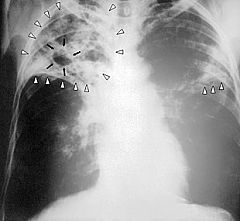 Stop Physician Burnout - Treating the Symptoms only Makes Burnout Worse
Stop Physician Burnout - Treating the Symptoms only Makes Burnout Worse
Physician burnout has two sets of symptoms
- One for the Doctor - the personal signs and symptoms that YOU are suffering from burnout as an individual
- One for the Organization - the various way rising levels of physician burnout destroy the performance and morale of a population of healthcare providers
For the individual physician, here is one of our most popular posts on burnout's symptoms and gender differences.
In this blog post, let me show you three quick observations from our work with over 140 healthcare organizations and societies to date:
- The common organizational symptoms of burnout
- How and why most groups only treat the symptoms of provider burnout
- And why just treating the symptoms inevitably makes everything worse
If you measure provider burnout within a healthcare delivery organization - and look for a correlation between burnout rates and the quality of the care that group provides to its patients - you will find distinct, reproducible trends.
Higher levels of provider burnout destroy the quality of patient care and the morale of the doctors in several consistent ways. Here is a partial list of those changes:
Higher levels of physician burnout lead to:
- Lower quality and patient satisfaction
- More errors and malpractice suits
- Higher turnover of physicians and staff
All of these issues are easy to see - the tip of the iceberg - and universally understood.
What remains invisible is the underlying cause of these surface issues/symptoms. Remember all of these issues have a common cause ... the level of provider burnout.
Now let's add in money.
In today's Pay for Performance world of contracting, nearly all organizations get paid for demonstrating positive changes in these same burnout symptoms. You get paid more for higher quality and satisfaction and save money by avoiding errors and turnover.
And so, the committees begin to multiply like rabbits.
Check it out for yourself
In your own organization I bet you have a Quality Committee and a Safety Council and a Patient Satisfaction Training Program, each of which have regular meetings, detailed agendas and multiple programs focused on improving dozens of metrics. They may have different names than the ones I listed and nearly all organizations have these standing committees and programs.
Realize that each and every one of these structures are simply treating the symptoms of burnout ... while burnout smolders unaddressed beneath the surface. Most leaders don't understand how to address burnout in any meaningful way and most organizations don't have an effective Burnout Prevention Working Group ... so they get busy treating the symptoms instead.
============
If we treated patients like this ... our license would be in danger
Just Imagine ...Imagine one of your patients presented today with fever, cough and shortness of breath. You examined them and prescribed
- Tylenol for fever
- Cough syrup for cough
- Oxygen for shortness of breath
Then patted yourself on the back for a job well done and sent them home to recuperate, confident in their recovery
 Leaving the underlying active tuberculosis untreated !!!!!!!
Leaving the underlying active tuberculosis untreated !!!!!!!
YIKES
Wrong diagnosis, wrong treatment, dead patient.
===========
When you treat only burnout's symptoms in an organization, it is actually worse than this clinical example
The most common symptom of burnout is exhaustion from overwhelm in the work day. The sheer quantity of tasks in direct patient care and documentation are beyond many of the physician's capacity on a daily basis.
The burnout rate is rising exponentially because many doctors are at their Last Straw Moment. One more task might drive them over the edge.
-----
-----
Which is EXACTLY what the Safety or Satisfaction or Quality Committees give them ... more damn things to do ... every single time
Each and every one of these committees gives the doctors even more things to do when they are already completely overloaded and exhausted.
Name me a safety or satisfaction committee that does not mandate the front line providers give their pet projects additional time, energy, clicks, documentation, hours wasted in committee meetings and more. The automatic assumption is the doctors can take it, that their bandwidth is completely elastic. You can throw anything at them. They might whine and complain and they always get it done. Right?
 This constant addition of tasks
This constant addition of tasks
- Worsens the overwhelm and exhaustion
- Drives ever higher burnout rates
- Makes the symptoms impossible to eradicate
- Destroys the culture, driving physician disengagement, resistance to change and disruptive behavior
When you only treat the symptoms, it makes EVERYTHING WORSE
Safety, Quality and Patient Satisfaction are all very important and worthy of meaningful improvement projects
AND
They are just symptoms of underlying physician burnout in most cases
Before you add any additional tasks from these committees to the doctor's daily workload ...
You must seat a Burnout Prevention Working Group and get to work building a Coal Mine Strategy to address burnout and lower stress at the level of the Organization and its Systems of Care DIRECTLY
Treat the TB directly
AND give the cough syrup and oxygen
Treat the Burnout directly
AND optimize safety, quality and satisfaction
=================
If you are at a loss about where to get started ...
Here are four of our most effective organizational burnout prevention tools.
... and you can contact us to discuss your situation in detail using This Form.
=============
PLEASE LEAVE A COMMENT:
How does burnout show up in your organization?
What are you doing to address burnout directly?
How is that working?



![CLICK HERE to Download the Disruptive Physician's Toolkit [ 10 Specific Ways to Avoid the "Disruptive" Label ]](https://no-cache.hubspot.com/cta/default/263814/69d11978-7715-43fc-b342-9991613931c1.png)